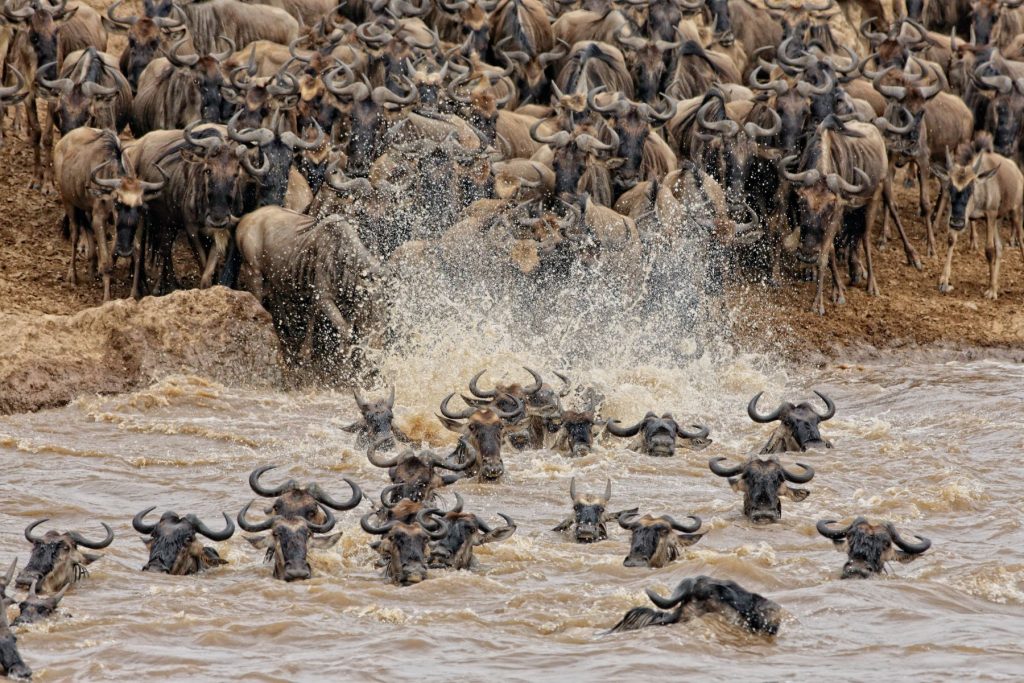The Great wildebeest Migration, as it is known, is the movement of millions of wildebeest from Tanzania’s Serengeti to Kenya’s Masai Mara Reserve. It is one of the most spectacular and thrilling displays of wildlife behavior in the world. Every year, the animals’ primal instincts guide them to greener pastures by following the climatic rain fall patterns over the Serengeti-Maasai Mara eco system. For the 2023 seasons, we recommend scheduling your trip for mid-July, as this is when the larger herds of wildebeest begin their journey into Masai Mara. The migration continues until the end of August, then begins to decline until mid-September.
Although numbers vary from year to year, previous migrations have seen up to 1.5 million wildebeest, close to a million Zebra, and large numbers of other animals embark on the lengthy journey that lasts several weeks. Their journey is especially perilous as they pass through the crocodile-infested Mara and Talek rivers, where many are killed by the giant nile crocodiles waiting for their prey.

The Great Wildebeest Migration
Travelers planning a safari to Kenya frequently have questions about the wildebeest migration, which we have listed below for brevity.
When does the Wildebeest Migration occur? Though the wildebeest migration into Masai Mara typically begins in July and ends in late September, the exact dates are not predictable until the first large herds of wildebeest gather at the northern edge of the Serengeti as they approach the Mara. These initial herds have been known to congregate for days on end without crossing the Mara, making it difficult to predict when the final leg of the movement will begin.
So, when is the best time to visit Masai Mara to witness the Great wildebeest Migration? Based on decades of experience, we believe that mid-July to late August is the best time to see the migration, Keeping in mind that this is a gradual event that occurs over several weeks at various locations along the Serengeti-Masai Mara border. If we were to narrow it down to which month is best to see the migration, August would be our choice.
Where do the wildebeest go and where do they come from? The wildebeest migration from the Serengeti to the Masai Mara is dictated by factors such as climate, pasture, and mating and calving seasons. Keep in mind that the wildebeest migrate in a generally clockwise direction throughout the year, covering vast areas reaching into the Southern, Central, and Western Serengeti before the year-long trek brings them to Masai Mara around July to August. Their return to the Serengeti occurs in late October, though it is less spectacular and more like a slow dispersal.
What are your thoughts on the Wildebeest Migration? The wildebeest migration can be seen during a safari gamedrive in the Masai Mara Game Reserve, which is led by experienced Driver-Guides in specialized vehicles. Because there are several key points where wildebeest cross rivers, it may be necessary to access and station oneself at these points during a day-long outing in the reserve, as some lodges and camps can be up to an hour’s drive from the best vantage points. Most tourists who come specifically to see the migration consider the river crossings to be the highlight of their trip and thus want to spend more time there.

Safari
Safari